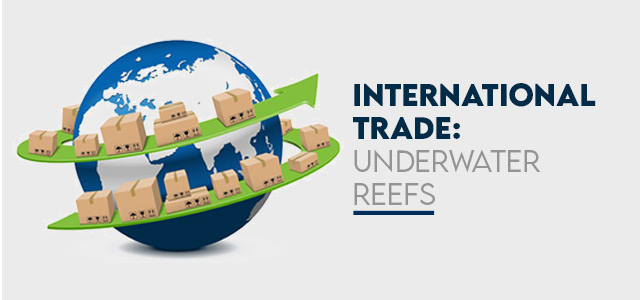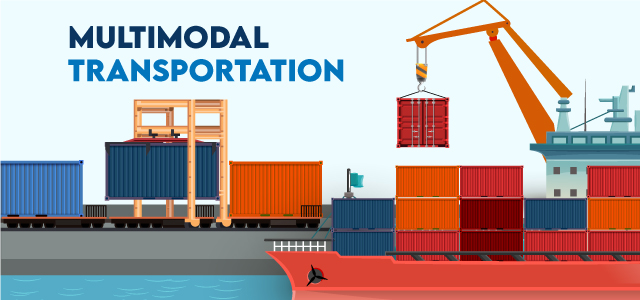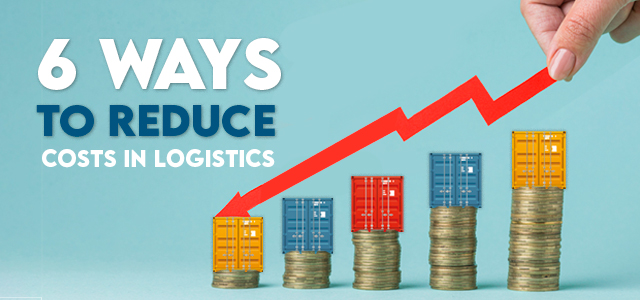Blog
All Articles
Total posts: 10

July 6, 2023
International Trade: Underwater Reefs
Transporting goods across borders involves global competition and multiple levels of requirements. Optimal solutions, staying up to date with strategies and rules, and using the latest technology are essential for international market success.
According to analysts and experts in this field, the most important points are the following:
Requirements and procedures in this area are constantly changing, and it is necessary to know about changes in international norms and rules firsthand in order to avoid delays in both production and sale of goods. Regular review of these rules will reduce their impact on exports to zero.
Don't forget that all documents must be in order, always! Echoing the previous principle, the paperwork required for global delivery can become an obstacle if you do not have up-to-date knowledge of international legal norms. Incorrect or incomplete documents tend to delay shipment and implementation, creating the risk of cancellation and damage to the company's reputation.
Using free trade zones while adhering to the standards and guidelines of international trade agreements, both in the production and distribution of goods, helps to achieve a regional advantage for your business.
In the international trade system, innovative technologies open up new opportunities, and this is an indisputable fact. Through the use of technology, some costs are reduced, which, in turn, stimulates the growth of commercial activity. Here we are talking about transport costs, logistics costs, costs for port services and customs clearance, for obtaining the necessary information, and transaction costs. A striking example is artificial intelligence and self-driving cars, which help reduce transportation costs.
Of course, the important point is not so much the choice of the market for offering products, as the adaptation to it. You will need to analyze it, make sure it fits your business, determine how easy it is to reach it and determine whether it is worth it.
International trade is a complex activity, so it is important for exporting companies to keep these best practices in mind as well as take advantage of reduced logistics costs to increase market share and succeed in new ones.

June 14, 2023
6 Essential Tips for Safely Transporting Fragile Goods
Proper packaging of goods, especially for fragile goods, is critical to successful delivery. Fragile goods come in many forms and require special equipment, handling, and handling conditions. These include glassware, laboratory equipment, musical equipment, jewelry, household items, china, valuable collectibles, or liquid goods. We present to your attention 6 essential tips for safely transporting this category of goods.
1. Packaging is selected according to the characteristics of the cargo. Filling voids in the tare with soft material helps secure the cargo during transport. This method helps reduce the impact of bumps and shocks.
2. When packing and loading fragile goods, regardless of the type of transport, consistency should be strictly followed: placing heavier loads lower reduces the risk of crushing or damaging smaller, more fragile goods.
3. Choosing the optimal type of transport that ensures timely and reliable delivery depends on the characteristics of the cargo.
4. Packing of personal items. No matter how big or small the items are, if they are fragile, they must be packed properly and efficiently. The use of materials such as bubble wrap, fabric, or cardboard will protect the goods, the cargo in the box will additionally be strapped, taped, etc. it is recommended to provide with
5. Marking of the parcel. The presence of clear labels such as "handle with care" or "fragile goods" is a reminder that this group of goods requires special handling.
6. Loading and unloading operations are carried out manually or using special equipment only by experienced workers.
However, even with the most careful organization of transportation, unexpected circumstances can arise that cause damage or loss of cargo. It is in such cases that there is a category of cargo insurance, which is especially important during the transportation of fragile goods. Insurance sums guarantee the client compensation for the value of the property.

May 26, 2023
Efficiency and Cost Savings: The Advantages of Multimodal Transportation
Shippers all over the world use multimodal transportation, and for many reasons, this system has many advantages.
What is multimodal transportation? This is a special type of freight transport, which involves the use of more than one mode of transport to deliver goods from the supplier to the buyer.
It is important to note that multimodal transportation involves changing only the method of shipment, without any changes in the handling of goods. For example, if goods are shipped in a specific container, the shipping method will change, but the container will remain the same.
Advantages of multimodal transportation
Multimodal transportation has a number of advantages that make this system one of the most commonly used in global logistics, namely:
- Reduced transport costs
- Better logistics management, combining the advantages of each mode of transport
- Using the same container reduces the time of loading, unloading, and handling of general cargo
- Fewer checks and inspections after sealing cargo units and containers
- Better item tracking
- Reduced risk of product loss due to theft or damage
- Reducing the cost of monitoring goods
- Reducing the time of cargo transportation
Multimodal transport services optimize air, sea, road, and rail transport from start to finish, and in an ever-evolving logistics environment, the network of partners is expanding. As Alliance Logistics, we specialize in multi-modal transport with the most cost-effective logistics solutions you may need, ensuring you achieve maximum efficiency while reducing costs and protecting the environment.

May 12, 2023
6 Ways to Reduce Costs in Logistics
Transportation is an essential component of the supply chain, and every industry participant strives to receive the most modern transport services at reduced prices. Transport logistics costs are skyrocketing these days for a variety of reasons. Inadequate planning, lack of transparency, and poor decision-making can lead to higher prices, missed deliveries, unhappy customers, and loss of business.
Listed below are 6 proper ways to decrease your logistics costs.
1. Consolidation of supplies
The company's delivery rates are determined depending on weight, distance, and other factors. Consolidation of shipments is one of the strategies suppliers use to make fewer trips and profit from lower rates on bulk orders.
2. Decentralized warehouse services
Another way to reduce transport costs is to use multiple decentralized warehouses. Having goods in decentralized warehouses ensures that they are already in proximity to the customer, allowing greater flexibility and shorter delivery times. Professional inventory management and communication are essential to plan optimal transport routes and save costs by knowing exactly how much and what types of goods are in stock.
3. Automatic container loading system
When handling bulky and heavy goods, loading and unloading containers is a critical part of the workflow. Using an automatic container loading system is a great way to reduce transport and labor costs, avoid product damage, and increase productivity by being able to load or unload all goods at once.
4. Use of technology
The COVID-19 pandemic has shown unequivocally that documenting processes on paper is no longer relevant. There are enterprises for which the digitalization of processes may seem like a significant change in material terms. However, in this case, the benefits outweigh the costs. Digital records give logistics managers a better understanding of the entire supply chain. Computerized record-keeping allows companies to find and correct shortcomings that are costing them money.
5. Reduce the size of your vehicle fleet
Finding effective solutions for fleet cost management can be quite a challenge. It is possible to cover more territory in less time by effectively distributing orders between available vehicles. When fewer trips are required to accommodate more deliveries, it is possible to decommission vehicle assets, further reducing costs.
6. Regular vehicle maintenance
Preventive maintenance can help you avoid breakdowns and keep your vehicle in top condition. With the right regular vehicle maintenance program, you can keep track of how far you've driven, how many times you've stopped, and how much fuel you've used. Good service helps keep vehicles running, resulting in lower fuel consumption and energy wastage, reducing transport costs.














